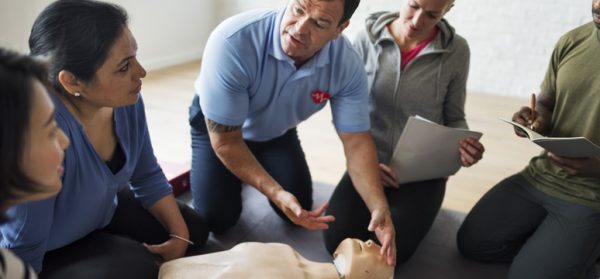
CPRNM® is a comprehensive directory designed to connect individuals and employers with top-tier training
providers including the AHA®, Red Cross®, and other training providers.*
How is frostbite and hypothermia treated?
Frostbite is damage caused to a localized area, while hypothermia is generally mentioned in regards to the entire body of a person who has been in the cold. This advice will help care for them.
Hypothermia and frostbite are two conditions which are somewhat related due to the fact that they are both more likely to occur during extremely cold conditions, especially the coldest months during the midst of the winter season. The human skin and other tissues are not able to withstand such extreme temperatures, and this is especially true of the tissue on the extremities such as the hands, feet, and face.
Freezing of the tissue is known as frostbite. Similarly, the body, in general, has to be able to create more heat than it lets out, and when it cannot compensate for the loss this is known as hypothermia. Either condition can lead to severe complications if not handled quickly by qualified medical personnel.
Preventing Frostbite And Hypothermia
Of course, the best treatment for these two cold-related issues is going to be prevention in the first place. People whose job or recreational pursuits leave them exposed to the cold more frequently will need to be especially careful to wear layered clothing which is not constrictive to the feet and other areas.
The skin and scalp should all be thoroughly covered, and then a person should remain active while being careful to avoid exhaustion. Alcohol and other drugs can cause slowness in the circulation which can be a factor which contributes to frostbite and hypothermia, and so these should be avoided especially when in high elevation or in weather where the temperature is less than 15 degrees Celsius.
Degrees of Severity
However, despite an abundance of precaution, there are still going to be times when these attempts at prevention are simply not enough to overcome the conditions. Then it becomes a question of how best to treat hypothermia and frostbite either for one’s self or for others who have been overcome. The degree of severity for frostbite will lead to its classification, and while the first-degree variation will only lead to superficial skin damage, the highest level of a fourth-degree frostbite is likely to require amputation due to the fact that it affects the underlying bone, tendon, and muscle.
The first step is to get the individual to an area which is shielded from the elements and then begin giving them warm liquids. If a person is waiting to be transported to a hospital, then the area will need to be warmed, and, in the absence of other methods, an extremity can be warmed in the underarm or groin of a companion as long as there is not a risk of re-freezing.
Types of Rewarming
Refreezing can cause worse damage, and so warming should be avoided if there is a risk during transport to the hospital or similar circumstances. The area should not be rubbed to keep it warm as this can cause further damage as well. Over-the-counter medicine such as aspirin or ibuprofen are good to administer since they can help to limit the occurrence of inflammation and clotting in the victim.
Hypothermia is also helped with rewarming of the person, and there are three main types: passive external rewarming, active external rewarming, and active internal rewarming. Things like heating blankets are good passive measures, as is placing hot water bottles under the armpits and groin. In the more severe cases, warm fluids will need to be given via IV, and so it is best to seek an emergency room or professionals as soon as possible. They will also be familiar with extracorporeal rewarming methods and be able to provide warm humidified air to the victim.
Final Measures
Hypothermia should be taken care of first in the hospital due to its life-threatening dangers. After that, a frostbitten area can be rewarmed, but this is usually a very painful ordeal, and so there will need to be measures for pain management taken as well. Warms baths of something like povidone iodine is the best way to go, and then there are other forms of complementary treatment such as blister draining, antibiotics, and tetanus toxoid.
If treated quickly, victims of either of these conditions will likely have a good prognosis. One myth that is often heard around the campfires is to give the victim something like whiskey or another stout form of an alcoholic beverage to help “warm” them up. This is actually not a viable method and can in fact make things worse.
1. http://www.wemjournal.org/article/S1080-6032(14)00280-4/fulltext
2. http://www.criticalcare.theclinics.com/article/S0749-0704(05)70052-X/fulltext
 August 17, 2017
August 17, 2017 






